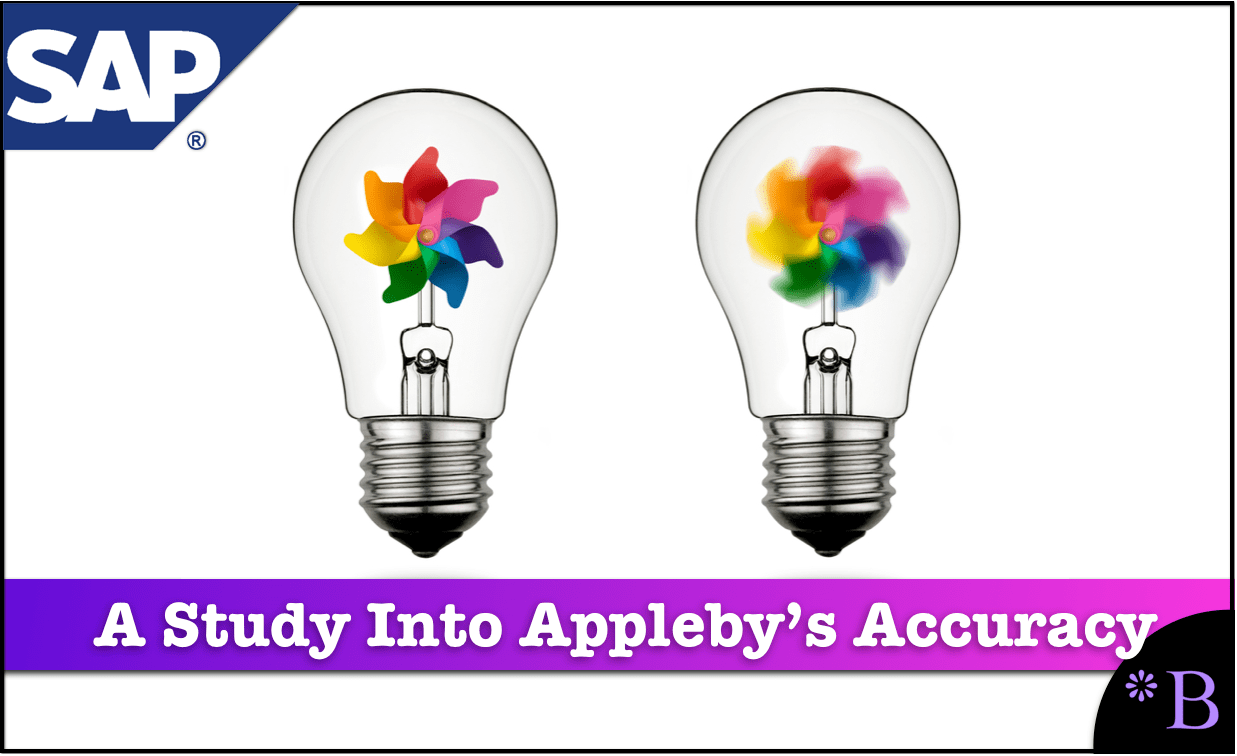How Accurate Was John Appleby on HANA TCO for Cloud vs On Premises?
Executive Summary
- John Appleby made bold predictions on HANA.
- How accurate was his analysis of the TCO of HANA in the Cloud Versus on Premises?

Introduction
John Appleby’s article on the SAP HANA blog was titled 10 SAP HANA Predictions for 2015 and was published on March 6, 2014.
Our References for This Article
If you want to see our references for this article and other related Brightwork articles, see this link.
Notice of Lack of Financial Bias: We have no financial ties to SAP or any other entity mentioned in this article.
The Quotations
HANA Cloud TCO is a No Brainer?
What fascinated me is just how impressive the TCO is for the HANA Cloud. It’s a no brainer. I took the on-premise pricing from this publicly available presentation.
Let’s look at a simple customer scenario. They have a data mart that they would like to build, and let’s say they need 256GB of HANA per year, growing linearly over 4 years. Let’s assume they can do HANA Platform Edition, or HANA Base Edition in the cloud, because they don’t need advanced engines.

But notice Appleby’s logic for the TCO.
“This is an extremely simplistic TCO and it doesn’t take into account the operational costs of running HANA on-premise, just the hardware and software cost for a productive system (not including Dev/Test). Those will skew running HANA on-premise even further. It’s also slightly unfair to HANA Platform, because the HANA Cloud has some limitations, but for many scenarios, the customer doesn’t care.”
An “Extremely Simple TCO”?
A straightforward TCO is not a TCO; it’s a PCO (partial cost of ownership). If Appleby checked our TCO calculators, he would find that maintenance costs are roughly 60% of the total TCO. So Appleby is leaving out the largest cost component of TCO.

Appleby’s Work Capability?
Appleby is not interested in putting work into his articles because this is not a TCO. There is another problem: the SAP Cloud was extremely immature at this time, and in 2019, it is still barely used by anyone. Therefore, if SAP customers had listened to Appleby, they would have gone with an ineffective cloud solution, which we covered in How Accurate is SAP’s Claims Around SAP Cloud?
Appleby has made no attempt to validate the SAP Cloud’s actual quality; this is just an incomplete cost comparison.
Conclusion
This article scores a 1 out of 10 for accuracy. But falls when the outcomes of following Appleby’s advice are followed.